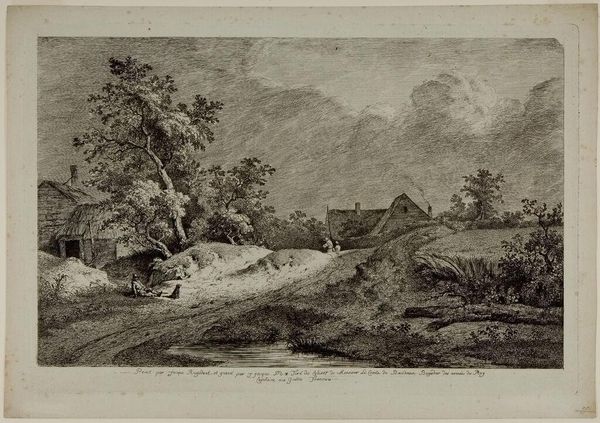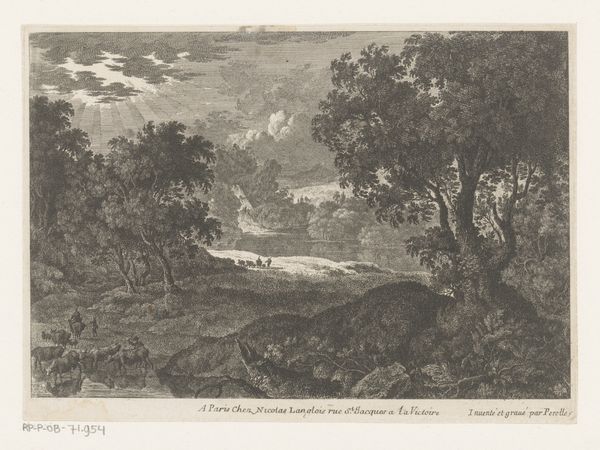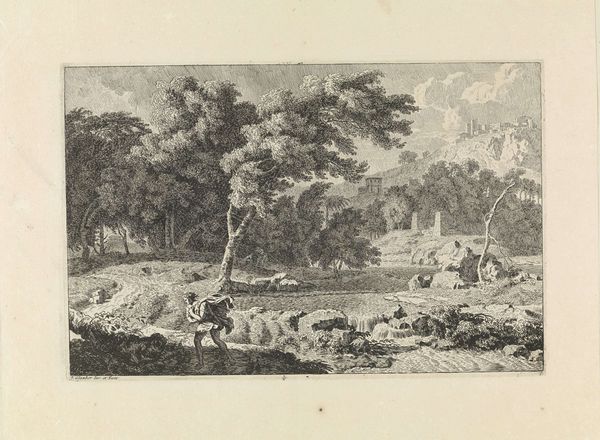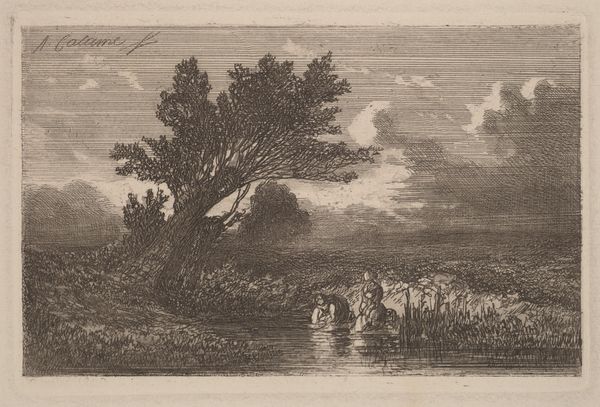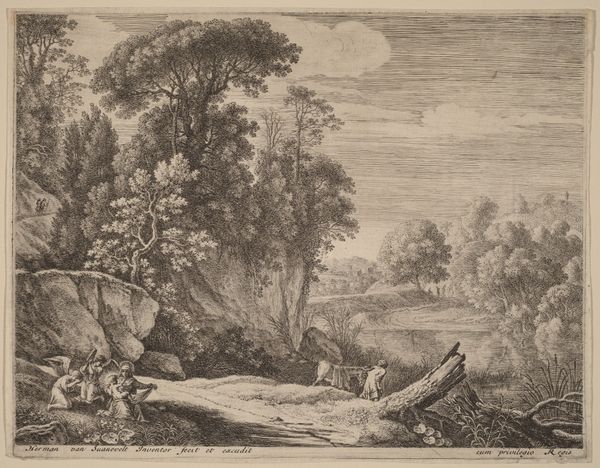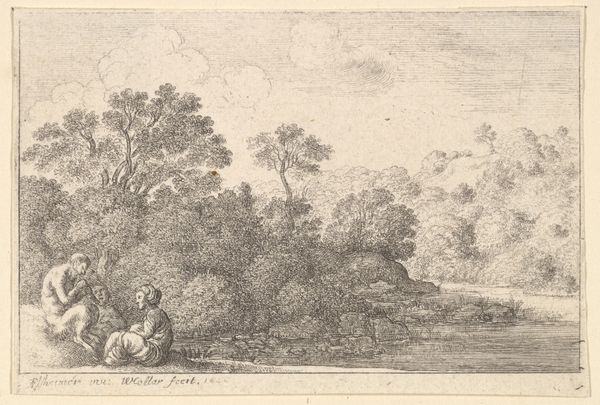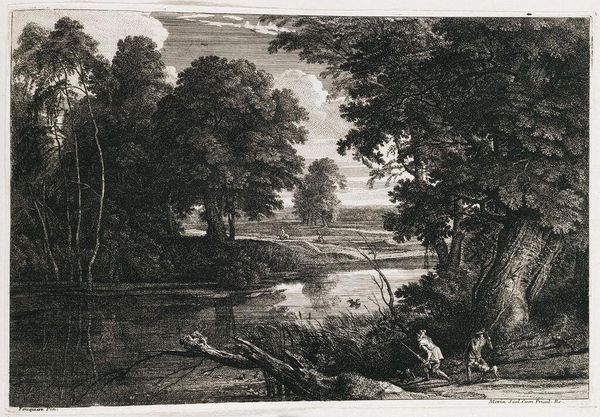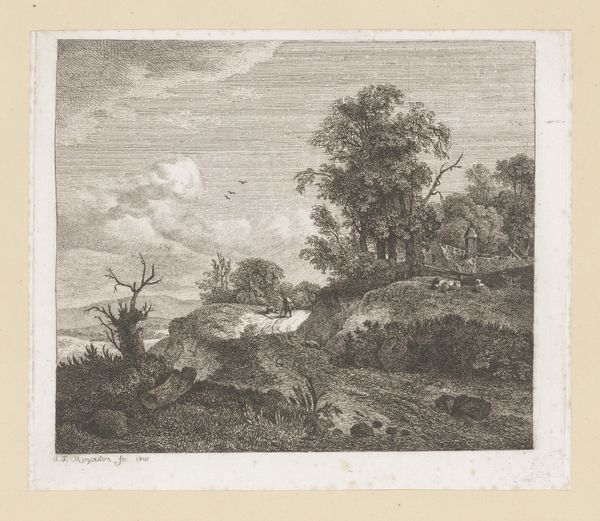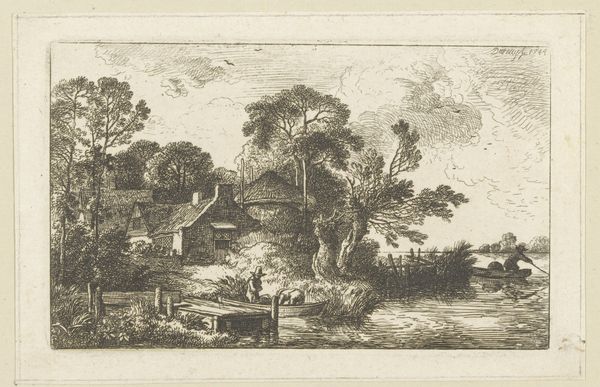
Dimensions: Sheet: 10 3/8 x 15 3/16 in. (26.3 x 38.5 cm)
Copyright: Public Domain
Curator: Here we have Jean-Jacques de Boissieu’s "Wheat Field," created in 1772. This captivating landscape is an etching, now residing here at the Metropolitan Museum of Art. Editor: It's... soothing, isn't it? All these delicate lines making up a rural scene. The detail almost tricks you into thinking you could reach out and feel the tall grass. But there’s also something melancholic about it; a certain stillness in the scene makes you want to dive deeper into its visual narratives. Curator: Indeed, landscapes from this era, while seemingly idyllic, often speak to broader ideas. This particular scene evokes themes of pastoral simplicity, the harmony of nature, but it also whispers about land use and ownership through the symbolism of wheat as livelihood. See the small figures resting – note the suggestion of labor embedded even in leisure. Editor: Mmm, yes, there’s someone seemingly napping. Even the clouds feel heavy with meaning—not just fluffy and decorative, you know? The image’s structure makes it feel like nature, humanity, and a sense of timelessness all captured in a moment of contemplation. Makes you consider the artist's feelings toward this scene; his experience viewing this site and distilling its components. I imagine a lone, introspective, figure contemplating meaning from within nature. Curator: Precisely, and the Baroque influence, although subtle, adds another layer. The drama isn't overt but present in the composition – note the tree that dominates the picture on the left, how the landscape rolls. Wheat, aside from its economic associations, often holds profound symbolic weight, linked to abundance and cycles of life, death, and rebirth across various cultures and periods. Its omnipresence in agricultural societies creates many layers of symbolistic richness that invite introspection, echoing sentiments present in other artistic traditions. Editor: Very true! So much intention. Almost gives me the feeling that even if you planted yourself in the middle of it all, it'd feel incredibly self-contained. Makes you question our connection to landscapes… how much do we affect a space, or is it, rather, the other way around? I think Boissieu captures something very complex in his vision for this very reason. It has this incredible ability to feel alive even after so much time. Curator: Boissieu offers us a space for reflection then, a glimpse into the artistic soul reflecting its world. A testament to the enduring power of images to hold more than what initially meets the eye. Editor: Absolutely. And, in my case, igniting a kind of rural-induced meditation session, maybe even urging to get some ink of my own. Thank you, Jean-Jacques, for these contemplative vibrations that cross centuries.
Comments
No comments
Be the first to comment and join the conversation on the ultimate creative platform.

